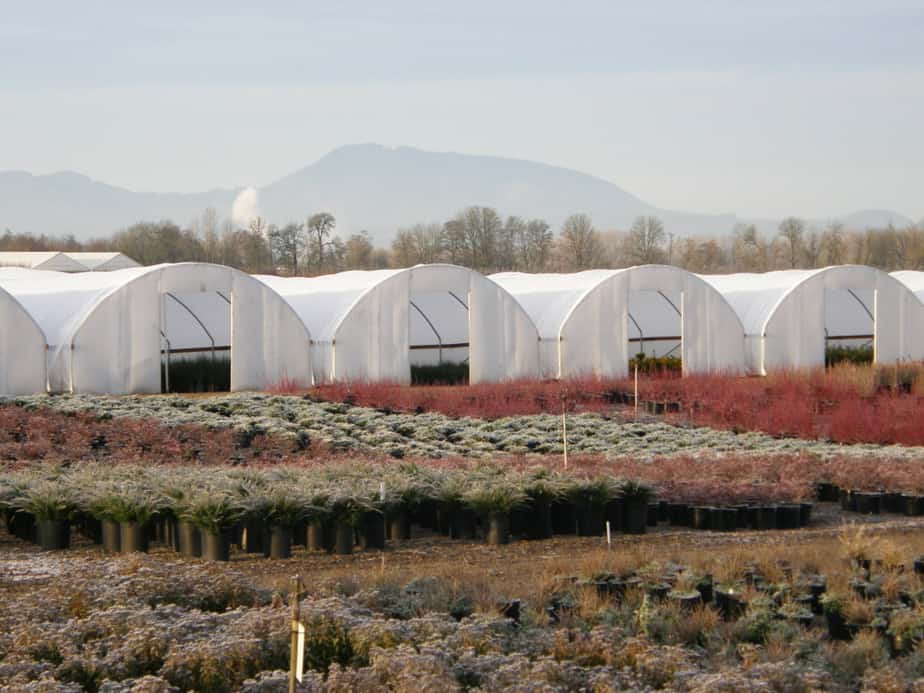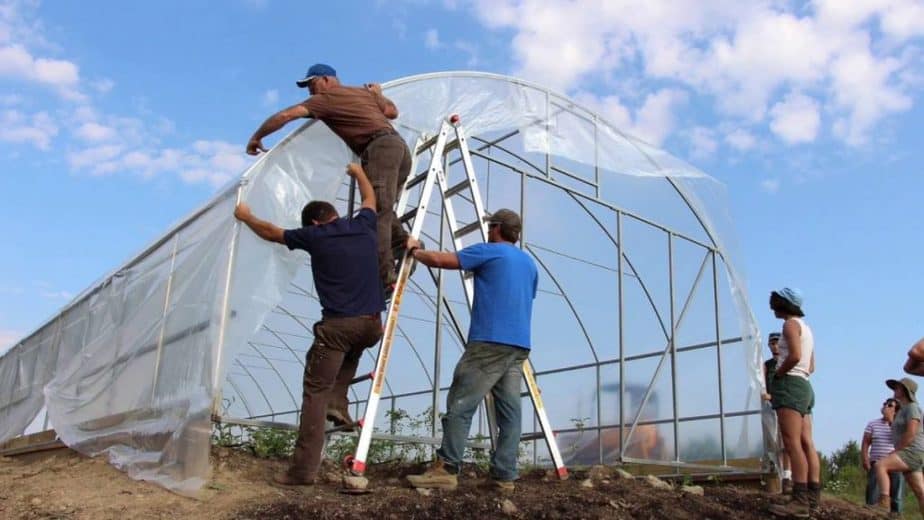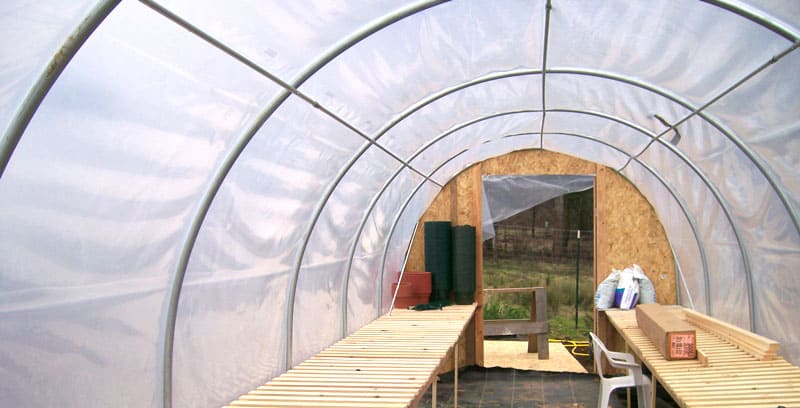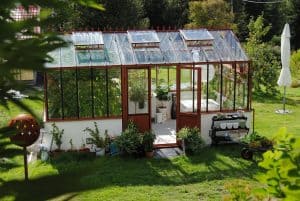Whether you’re building or buying a kit, the greenhouse covering should be high on your priorities list. Today, we’re answering the common question: glass or plastic?
On one hand, glass has been the material of choice for many decades. It’s reliable and aesthetically pleasing.
Compared to glass, plastic was much less popular among greenhouse gardeners. However, plastic technology has undergone recent game-changing improvements.
So which one should you choose, glass or plastic for your greenhouse?
Greenhouse Covering – Plastic or Glass?

1. Insulation and Heat Retention
Polycarbonate plastic sheets provide better insulation for greenhouses than glass. The former also offers a higher rate of heat retention and as a result an overall higher average temperature.
As such, polycarbonate plastic can extend your growing season to include winter months, so you can keep growing and planting crops year-round. It even allows you to grow crops that require higher-than-usual temperatures.
Glass greenhouses, on the flip side, don’t have the same levels of heat retention. However, this can be a plus if you live in a tropical climate. In such conditions, plastic greenhouses may require cooling systems, such as adequate ventilation or specially purposed window shades, during the peak of summer heat.
2. Light Distribution
Glass greenhouses allow sunlight to directly pass through, without filtering out UV radiation. While some research suggests that UV radiation increases plant growth, other studies show that UV radiation can be damaging for plants.
Polycarbonate plastic sheets can be treated to diffuse sunlight and block out harmful UV rays. Diffusing the sunlight also enables it to reach every corner of your greenhouse, so you won’t have to worry about plant placement to avoid shadows.
This can give your crops more consistent growth, which is always good to achieve.
3. Transmittance
Both glass and plastic transmit light over the visible light spectrum called Photosynthetically Active Radiation (PAR) transmittance. This is the kind of light that plants mainly require to thrive.
Single-layer glazings, whether glass or plastic, flexible or rigid, generally transmit 90% of light while double-layer glazings transmit about 80% of light.
Of course, there are a few percent differences in transmittance, but this isn’t important because other factors interfere in the transmission of light anyways. These factors include the location of the greenhouse, its orientation to the sun, shading, season, and so on.
However, plastic glazing is likely to yellow and fade with time, which is a downside that results in the loss of 10% or more light transmission over their few-years lifespan.
While we’re on the topic of transmittance, we should also address the use of direct vs diffused light. Direct is the light that enters the greenhouse directly without any reflection, whereas diffuse radiation is the light that gets scattered by anything in the air such as dust, clouds, or even the greenhouse cover itself.
Direct and diffuse light will both support photosynthesis given they have the same intensity. But many believe that diffuse light has the advantage because it allows lower plant leaves to receive light instead of being shaded by upper leaves in a direct light setting.
Based on this thought, plastic glazing would technically be the better option for constructing a greenhouse. Also, double-layer glazing would have the upper hand.
But practically speaking, the diffusion factor isn’t a big deal since light already gets scattered in the atmosphere inside the greenhouse. Direct light would only be a real issue if your greenhouse is located in a greatly exposed area such as a desert.
4. Safety
When it comes to safety, plastic is the clear winner. Glass greenhouses are vulnerable to breakage and damage, and the shattered glass can be seriously dangerous.
Your greenhouse may turn into a safety due to a mere rock, especially if you have children in the house. On the contrary, polycarbonate plastic greenhouses are sturdier and virtually unaffected by stray rocks or directed force.
Plastic eliminates the risk of injuries caused by shattering and sharp shards. The softer surface is harmless, even if a child accidentally collides with it.
5. Installation and Maintenance

As you can probably expect, installing and maintaining plastic sheets is much easier compared to a fragile material such as glass, which also requires you to hire professionals for installation.
If a glass panel gets damaged, you’ll need special equipment to replace it. On the other side, replacing polycarbonate sheets is a fool-proof process.
Not to mention, plastic involves no risk of shattering even when dropped, which means you can handle it without worry. If you did get your polycarbonate sheets damaged, repairing them is often simple enough to complete on your own.
6. Aesthetics
This is all glass. Most people prefer the way glass looks since it’s clearer, has a more solid appearance, and provides the traditional look of a greenhouse. Plastic, on the other side, looks cheaper, less professional, and less stable.
For context of the worst case aesthetic scenarios, glass may crack or break when it gets damaged, whereas plastic may rip and get cut open.
7. Cost
Cost is the deciding factor for a lot of gardeners when choosing a greenhouse. This is a major advantage in favor of plastic.
If you opt for glass, you’ll pay more money. However, some greenhouse owners are willing to pay the extra price for glass’s aesthetic upper hand over plastic sheets.
While it’s true that polycarbonate sheets don’t provide the same transparency as glass, their price tag is way more affordable. They’re also more sturdy so maintenance won’t cost as much.
Consensus – Glass or Plastic Greenhouse?

When it comes to greenhouses, which one should you choose: glass or plastic? As you can tell by now, there are several factors you need to consider before making a final decision.
Although some owners still prefer the more traditional look of glass, a lot of serious greenhouse owners are switching to polycarbonates because they’re less expensive, easier to use, more durable, safer for kids, and offer better insulation.




